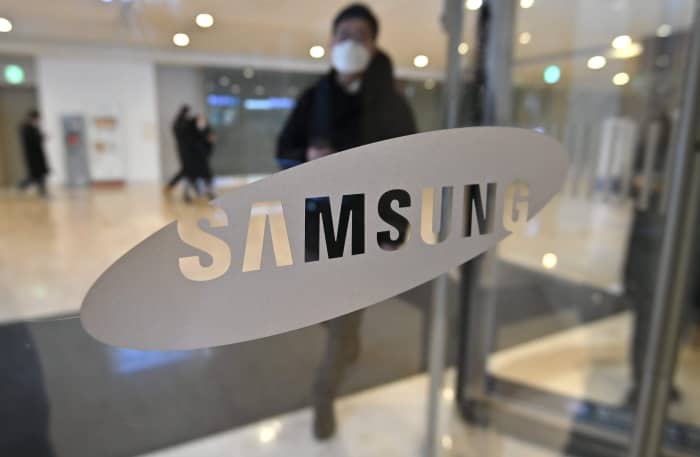When Rook Soto lost his law enforcement job in 2010 for health reasons, he had big medical bills and had to take temporary jobs to survive. For a month, he was homeless and lived out of a van.
Soto had heard about coding academies that help people become software engineers, but couldn’t afford the tuition. Then he found Pursuit, a nonprofit group that offers coding classes for free as long as he shares a percentage of his future earnings.
After 10 months of training at Pursuit, Soto got a job in 2018 with a $85,000 salary a year. He now makes $200,000 a year and owns a house in Norwalk, Conn. “From being homeless to owning a decent home, that would never have happened without this career,” he tells Barron’s.
Pursuit’s program is one of the thousands of new bonds aiming to finance socially beneficial causes while delivering financial returns to investors. Typically issued by government agencies and financial institutions, these so-called “social bonds” use their proceeds to fund job training, healthcare, affordable housing, among other projects.
Singapore’s Women’s Livelihood Bond offers microloans to women entrepreneurs in southeast Asia, while the Tokyo government is planning to sell a bond to help the city prepare for the next big earthquake. The pandemic has also spurred a lot of bonds around the world that helped expand hospital capacity, produce protective gear, or support healthcare workers.
Social-bond issuance jumped from just $20 billion a year pre-Covid to well above $200 billion annually since 2020. There’s also been a rise of the so-called “sustainability bonds,” which package environmental and social projects in a bundle.
When social bonds were first introduced a decade ago, investment returns were usually tied to the success of the program they funded. The world’s first social bond in the U.K. raised £5 million to fund a program that helps reduce the reoffending rate of prisoners. The program reached its goal seven years later, which translated to an annual return of 3%.
An opposite example was a similar program at New York’s Rikers Island backed by Goldman Sachs
Because the recidivism rate didn’t drop as much as expected, Goldman and Bloomberg Philanthropies, a partner in the project, both lost money.
To avoid such high risks, many social bonds issued in recent years aren’t linked to any specific performance target. Just like regular bonds, investors are guaranteed to get their money back, plus fixed-term income, unless the issuer becomes insolvent. There might be some bonus payment if the program is extra successful.
“These social metrics are very hard to compute, and the market is not ready for that yet,” says Candace Partridge, social and sustainability bonds data manager at Climate Bonds Initiative, a London-based organization.
This doesn’t mean social bonds can use the money unmonitored. Issuers usually release a framework describing how they plan to use the proceeds. A group of independent “verifiers”, such as Sustainalytics and Moody’s, then evaluates whether the program meets their criteria to be labeled as a social bond.
“For us, impact investing has to have a direct and measurable outcome associated with it,” says Steve Liberatore, who manages Nuveen’s ESG-focused fixed-income strategies, “The direct knowledge of where that capital is being deployed has always been critical.” Nuveen holds socials bonds in many of its portfolios.
Nonetheless, the system is largely based on voluntary guidelines. There is currently no relevant regulation in the U.S. The European Union is developing a “social taxonomy” that officially defines which economic activities are contributing to the bloc’s social goals, but the progress has been stalled this year.
It will be a difficult task, since there is no universal standard about what’s socially good.
For example, some affordable housing programs aim to help low-income buyers finance their first house, but critics question whether it’s just a different way of selling mortgages. “These people already have a down payment,” says Partridge, “It really isn’t about poverty, as opposed to projects that put people in city housing, who legitimately have no home.”
Things can become even trickier if investors consider the environmental impact of a project as well. Some infrastructure projects, for example, might not be climate friendly or energy efficient—even though they are beneficial for local communities.
Another problem: Companies, institutions or even countries might have alleged misconduct on some issues while making positive contribution to others. For example, some fashion brands have funded many sustainable programs, but are accused of human rights negligence in their supply chains. This makes it difficult to draw a clear line.
Generally speaking, social bonds aren’t expected to make profits, as their economic benefits are usually long-term and wide-reaching. There are exceptions. By investing in people and upping their skills, programs like Pursuit’s could generate foreseeable cash flow for investor return.
Pursuit issued a new bond in 2020, raising $12 million to help 1,000 low-income workers move up the social ladder. And its investors, led by Switzerland-based Blue Earth Capital, will take a 5% to 15% cut from the fellows’ salaries—only if they get a new job in tech—for four years. That translates to a 7% estimated annual return.
“The financial success of the fellows is linked to the success for us as the lender,” says Amy Wang, Blue Earth’s head of private debt, “This model ensures that the accountability is always there.”
Unlike philanthropic work that relies on external donations, the bond structure allows such programs to become self-sustaining and scalable, says Stuart Spodek, a portfolio manager at
BlackRock
and board member of Pursuit, “As the model proves itself, I’d expect to see more institutional capital coming to the market.”
Write to Evie Liu at evie.liu@barrons.com














